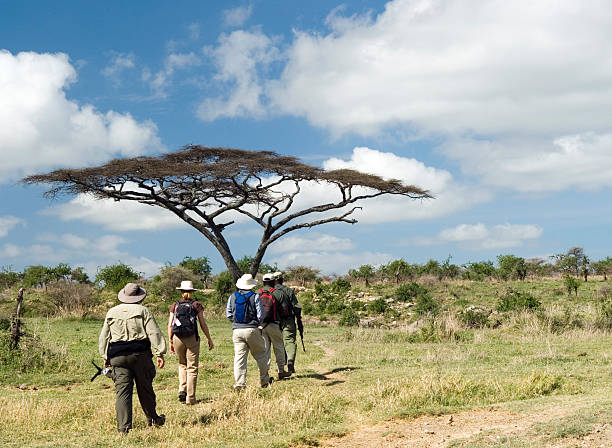Reimagining the Traditional Trek: The Emergence of Walking Safaris
The thrill of setting foot on unexplored trails, the promise of close encounters with wildlife, and the lure of total immersion in nature—these are the elements that have propelled the rise of walking safaris. This recent trend in the travel sphere is reshaping the way we think about wildlife expeditions, offering a fresh and deeply engaging perspective on the world's most beautiful wildernesses.

The roots of Walking Safaris
Walking safaris are not a new concept. Indigenous people have been traversing their lands on foot for centuries, using their intimate knowledge of the environment to survive and flourish. However, it was only in the late 20th century that this practice began to be commercialized for tourism purposes. Early pioneers in Africa, such as Norman Carr in Zambia’s Luangwa Valley, recognized the potential for walking safaris to provide a more intimate and authentic wildlife experience than traditional game drives. The idea soon caught on, and today walking safaris are offered in many of Africa’s premier wildlife destinations, as well as in other parts of the world.
The Evolution of the Walking Safari Trend
Walking safaris have evolved significantly over the years. Initially, they were little more than guided bush walks, offering a nice change of pace from the confines of a safari vehicle. However, as the concept has grown in popularity, operators have begun to offer more comprehensive walking safari packages. These often include several days of trekking through wilderness areas, camping out under the stars, and enjoying up-close wildlife encounters. This evolution has been driven by a growing desire among travelers for immersive and active experiences that bring them closer to nature.
Advantages and Challenges of Walking Safaris
Walking safaris offer a host of benefits. They provide a more immersive wildlife experience, allowing travelers to engage all their senses and gain a deeper understanding of the environment. They also offer a unique physical challenge and the opportunity to disconnect from the modern world. However, walking safaris also pose some challenges. Safety is a significant concern, and it’s essential to have a skilled guide who understands animal behavior. The physical demands of walking for long periods can also be challenging for some, and the lack of creature comforts may not appeal to everyone.
Practical Considerations and Tips for Walking Safaris
For those considering a walking safari, here are a few practical tips:
- Choose the right destination: Some locations are better suited to walking safaris than others. Research is essential.
- Select an experienced operator: Your safety and enjoyment depend heavily on your guide, so choose an operator with a strong track record.
- Pack appropriately: Good footwear is essential, and it’s also important to consider the climate and terrain when packing.
The Impact of Walking Safaris on Travel Culture
Walking safaris are reshaping travel culture by prioritizing immersion and connection over ticking off a checklist of sights. They represent a shift towards slow and thoughtful travel, where the journey is as important as the destination. This trend reflects a broader movement in our society towards mindfulness and presence, and it’s changing the way we travel for the better.
In conclusion, walking safaris offer a unique and deeply engaging way to experience the world’s wilderness areas. While they may not be for everyone, for those seeking a more immersive and active wildlife experience, they are an excellent option. As we look to the future, it’s clear that this trend is here to stay, continuing to shape and redefine our travel experiences.




